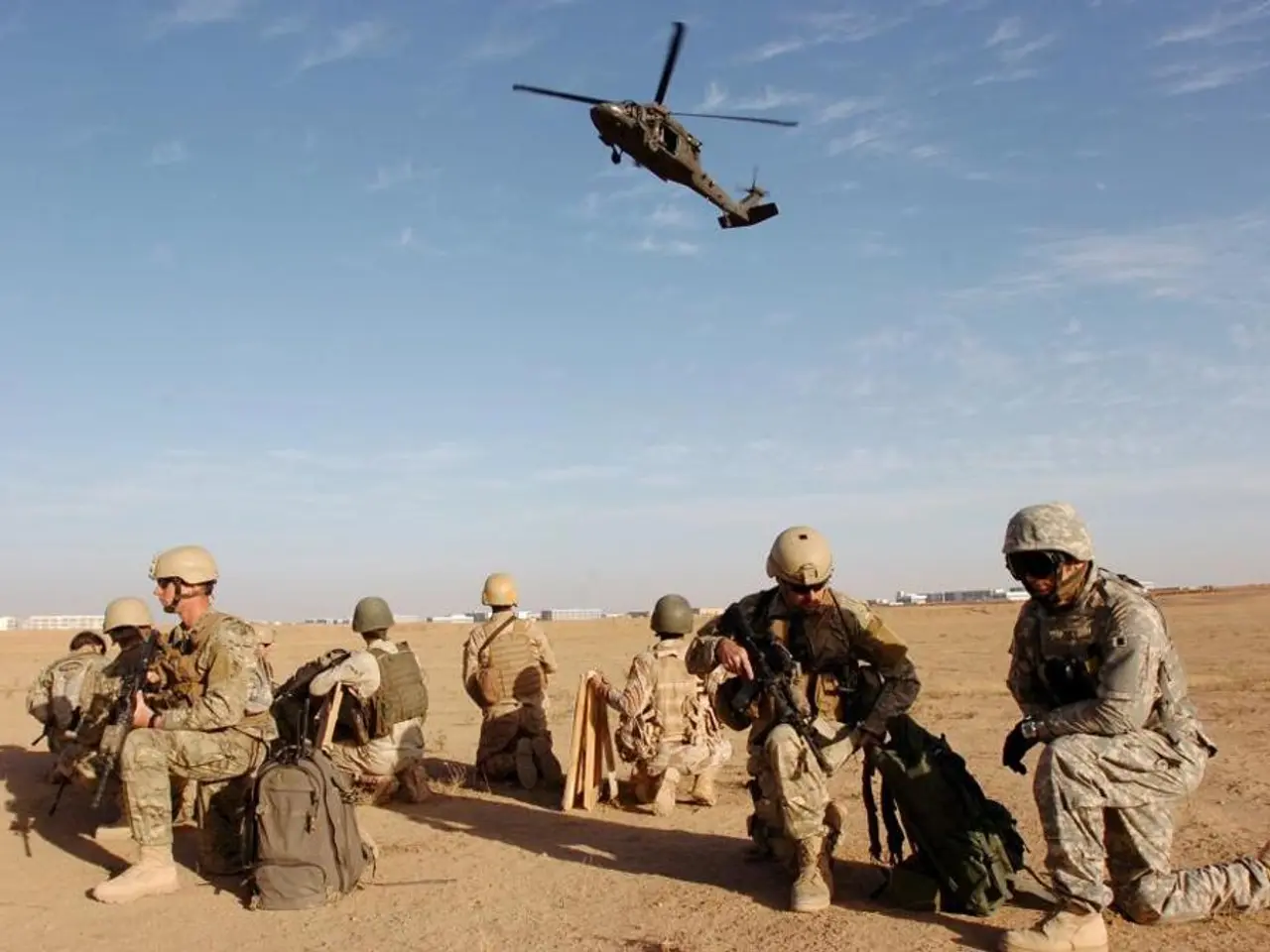Military Aid Journey: Air Force Delivers Aid from Gaza to Wunstorf as Part of Relief Effort - Air Lift for Gaza Instead of Wunstorf: Luftwaffe's Intervention
The humanitarian crisis in the Gaza Strip continues to unfold, with aid distribution facing numerous challenges and limitations. The Gaza Humanitarian Foundation (GHF), a militarized aid distribution system under Israeli military control, has replaced the UN-led humanitarian response, leading to chaotic and dangerous conditions for Palestinians seeking aid[1].
Violent crushes, looting, and theft have become common at GHF aid distribution sites, resulting in the injury and death of many Palestinians[1][2]. Since May, around 1,373 Palestinians have been killed while seeking food aid, with the majority of fatalities attributed to the Israeli military along convoy routes and near GHF aid sites[2]. The medical aid group Médecins Sans Frontières (MSF) has reported treating numerous patients injured in these chaotic conditions, labelling the situation as not humanitarian aid but as institutionalizing starvation as a weapon of war[1].
The United Nations has warned that airdrops are not a viable solution to the humanitarian crisis in Gaza due to ongoing violence and restrictions[2]. Attacks continue along the routes of convoys and near aid distribution points despite announced military pauses, severely limiting aid delivery effectiveness[2]. The siege and hostilities have exacerbated catastrophic hunger and suffering in Gaza’s civilian population, with widespread destruction and no permanent ceasefire[3].
Humanitarian organizations face major challenges including Israeli military control of aid routes and sites, violent conditions at distribution points causing injury and death, persistent attacks on convoys and aid workers, limited scale and dignity in aid delivery, widespread destruction in Gaza limiting distribution infrastructure, and the siege preventing large-scale aid truck entry[1][2][3].
Amidst these challenges, relief efforts are ongoing. The German Air Force is conducting relief operations using transport Airbus 400M aircraft, dropping approximately 11 to 12 tons of goods per flight over the Gaza Strip[4]. Staff Captain Dieter, a pilot of one of the Bundeswehr aircraft, is involved in the operation. The aid drops are being observed by journalists, including a dpa reporter[5].
Under international pressure, Israel has allowed around 200 trucks from UN and other organizations to enter the Gaza Strip daily since over a week[6]. Since Friday, the Bundeswehr has dropped a total of nearly 75 tons of goods. However, the attack by Hamas and other Islamic terrorist organizations on Israel on October 7, 2023, triggered the Gaza war, and the situation remains highly problematic[7].
Despite the ongoing crisis, hope remains. More than 170,000 tons of food alone from the World Food Programme are in the region or en route, enough to feed the entire population of Gaza Strip for almost three months[8]. Israel has also launched a new procedure for the gradual and controlled resumption of imports through the private sector[9].
References: 1. Al Jazeera 2. The New York Times 3. Reuters 4. Deutsche Welle 5. dpa 6. Haaretz 7. BBC News 8. UNRWA 9. The Jerusalem Post
- The ongoing humanitarian crisis in Gaza necessitates a strong community policy that prioritizes environmental protection, as the destruction in the region has severely limited distribution infrastructure and made it challenging to deliver aid effectively.
- As the war-and-conflicts in Gaza continue, it is crucial for the international community to address the health and environmental issues arising from the crisis, ensuring the protection of the environment and the well-being of the civilian population in their relief efforts.







